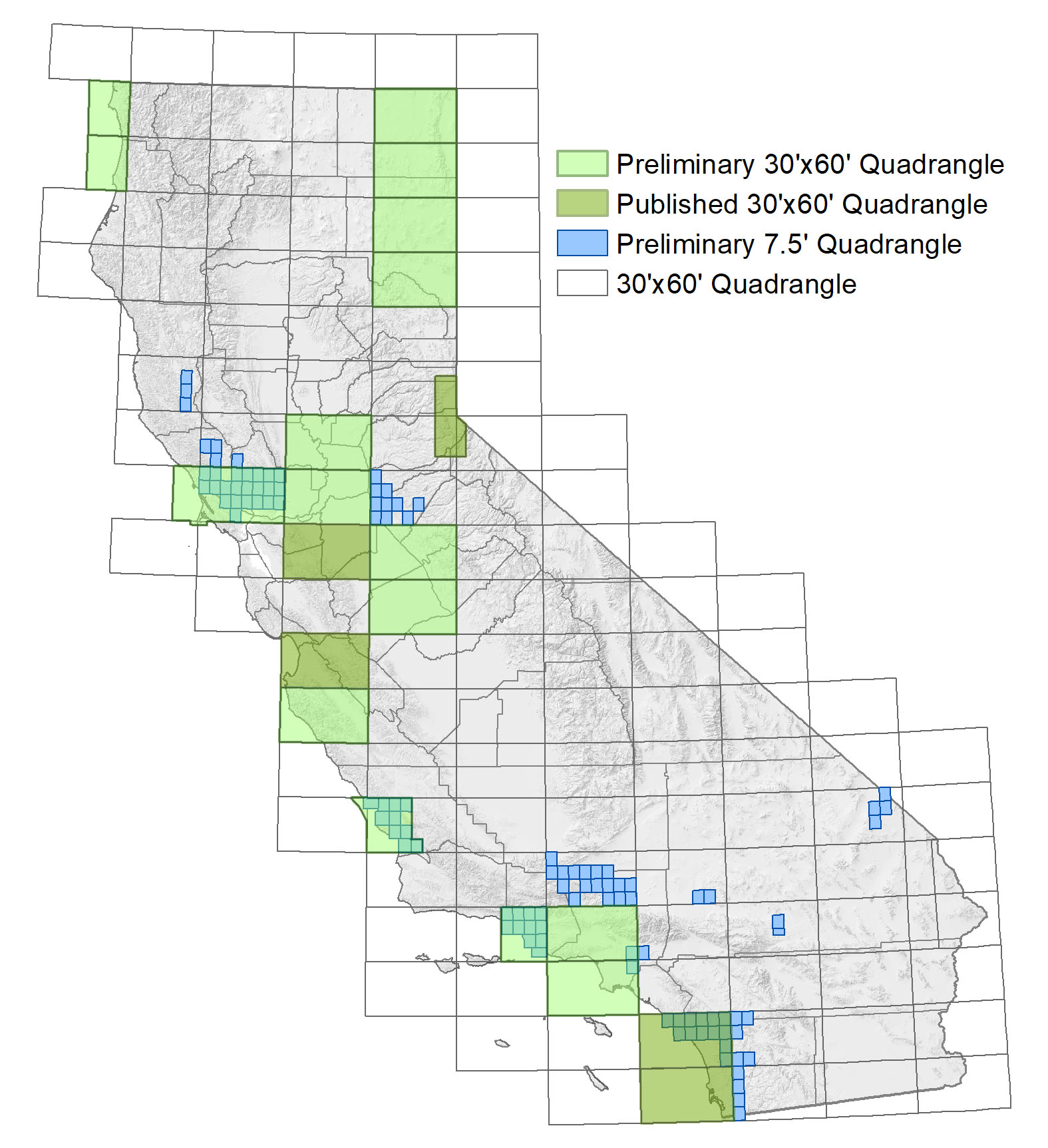 Above: Index map showing available quadrangles of the modern California Regional Geologic Map series. Smallest squares represent 7.5 minute quadrangles (1:24,000 scale). Larger rectangles represent 30-by-60 minute quadrangles (1:100,000 scale). Click or tap the image to open a larger version.
Above: Index map showing available quadrangles of the modern California Regional Geologic Map series. Smallest squares represent 7.5 minute quadrangles (1:24,000 scale). Larger rectangles represent 30-by-60 minute quadrangles (1:100,000 scale). Click or tap the image to open a larger version.
For decades the Geologic Atlas of California (discussed in the next section) has been the primary source of regional-scale geologic maps in California. In an effort to keep the maps current, the CGS has been compiling a new series of Regional Geologic Maps (RGM), starting in 1981. The new maps cover the same areas as the older Geologic Atlas of California, but show more detail and use geologic formations rather than the simplified geologic time-based units.
The CGS published the first six maps of this series at 1:250,000 scale. After 1992, we began producing more detailed, larger scale maps (1:100,000 and 1:24,000 scales). To date, there are more than 100 new or updated geologic maps in the current RGM series.
You can download maps of the Regional Geologic Map series using the links provided below. Printed versions can be purchased from the CGS Publications sales desk.
7.5 Minute Quadrangles (1:24,000 scale)
7.5 minute quadrangles (1:24,000 scale) are available on our Preliminary Geologic Maps page.
Other 30-by-60 Minute Quadrangles
Additional 30-by-60 minute quadrangles (1:100,000 scale) are available on our Preliminary Geologic Maps page.
